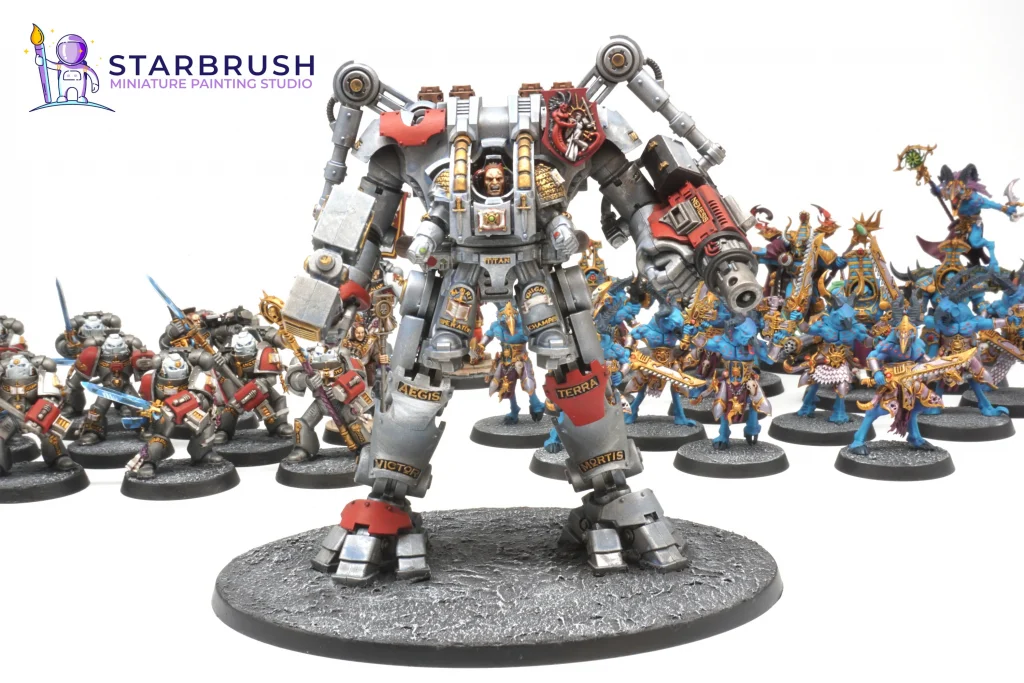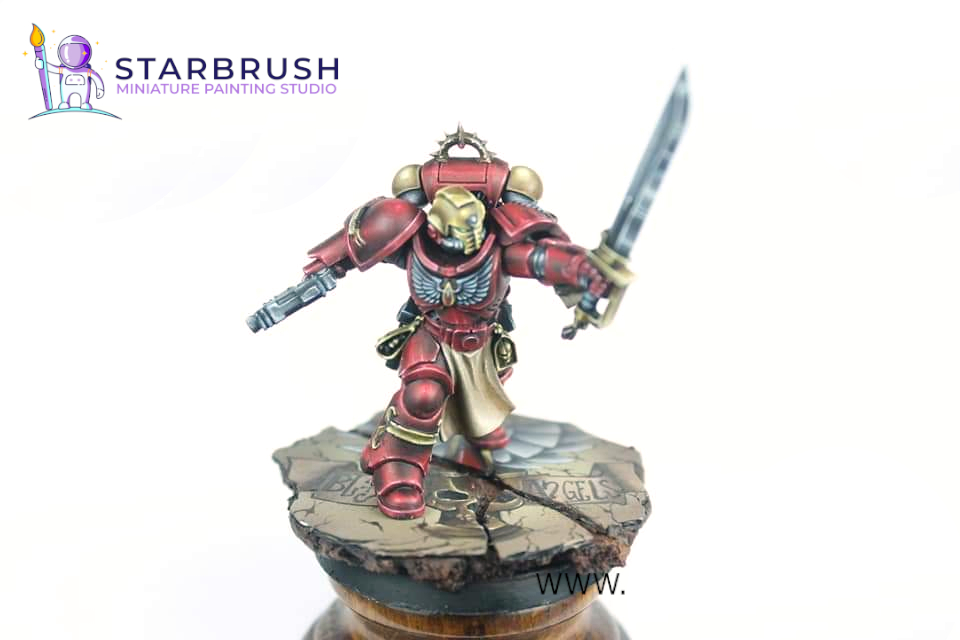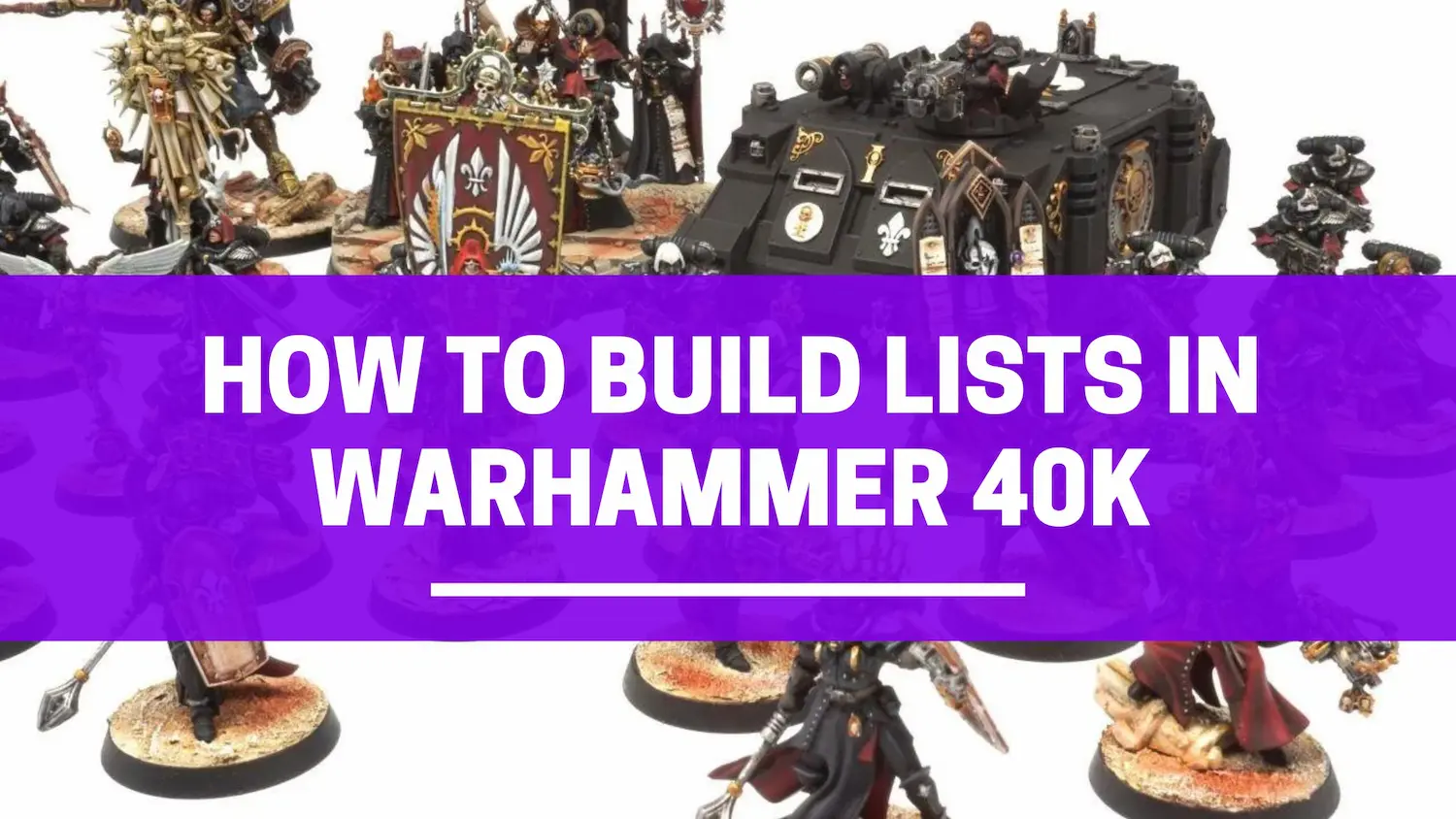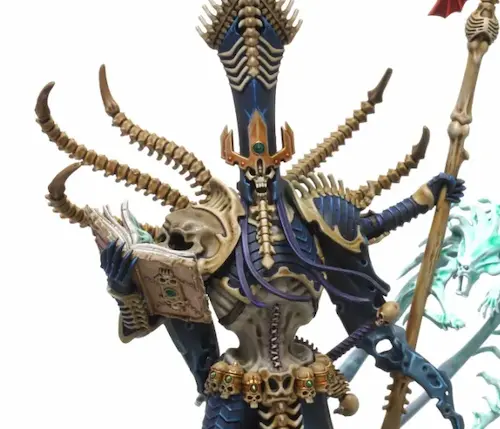As I usually say, army lists are at least 40% of the success factor in a wh40k battle. We can already be great players, if we don’t have a good list (and our opponent does) we won’t have anything to do. In this article we will give some good practices when designing our army lists. For the most veteran in these fights, surely this article will fall short. I hope this article will help especially for the newest.
Detachment: battalion only?
The detachment is the organization of our list, so its correct choice will be key. But is there really such a choice? The reality is that there are only three basic detachment types as a starting point (that is, they don’t cost us command points because our Warlord is in it):
- Patrol: only suitable for games with a few points, because the type of units available is very limited.
- Battalion: the most used standard.
- Brigade: more space for each type of units, but the requirements are very high, in particular that of a minimum of 6 units of troop type, so it is only suitable in games with many points (I would say 3k) or for armies with a very cheap troop unit.
All the other detachments cost us Command Points, with the exception of the very particular Supreme Command, designed for units with their own name (Guilliman, Mortarion…) and fortifications. So they will be auxiliary detachments.
Are they worth it? It is questionable. There has to be a very strong reason to want to put a detachment, for example, spearhead (based on heavy support) in addition to the battalion, which already allows 3 units of this type. Furthermore, given that the Patrol is cheaper (only 2 MP) and that it only asks for a troop-type unit as a requirement, the Patrol is emerging as the auxiliary detachment par excellence.
So the most normal thing, at least in games at 2k points, is to play a battalion and, occasionally, a patrol to add more units of some type that is particularly convenient for us, and always remembering that we will have to pay 2 MPs.

The starting point of the lists in ninth: troop-type units
If the base detachment is the battalion, the inevitable toll is troop type units. We are going to have to put in a minimum of three units of this type.
However, it must be taken into account that troop units have the Assured Objective rule . A very important rule that I summarize: if two units dispute an objective, the one with the secured objective is the one that controls it.
And I want to remember what I have already said on many occasions: ninth is earned by controlling objectives and playing the missions . This is why troop-type units, although they are not usually the most powerful, acquire a very relevant importance.
So there are two approaches here, which will depend above all on our codex and our strategy:
- Pay the toll, paying as little as possible.
- Invest in troop-type units, maximizing their effectiveness or even getting more than 3 units.
I am going to give an example with marines: if we want to pay the minimum, we put 3 tactical squads and that’s it. But if we want to invest a little more and take advantage of the very good units they have, their thing is to put in at least one heavy intercessor with a heavy bolter and two infiltrators. The difference is from 270 to 410 points, not to mention if we add more units (intercessors, assault intercessors…).
Another example with necrons: we can play with the minimum, three units of immortals (255 points) or put three balls with 20 necron warriors (780 punches… but kill them if you have eggs). It is a good example, because the necron warriors almost ensure a good control of the table and therefore objectives, but this faction can precisely play with a subfaction in which all the units can have a guaranteed objective, and in this case the immortals would rent more , Sure.
For me at least, the first thing I ask when going to make the list is what type of troop units I am going to use. And from then on.
Headquarters
A very big change from 8th to 9th is that having more detachments is now penalized. And that implies, by the nose, playing with less characters from the Headquarters (HQ onwards). In eighth grade you could put in an extra detachment with three characters, which not only gave you points but also more options to play with them. Now it’s just the other way around.
It is something important because the HQ is usually occupied by very powerful characters, who above all have many synergies with the rest of our army. And they are also usually very configurable thanks to the use of Warlord traits and relics.
So if we start from the famous battalion, we know that at most we are going to start with 3 HQ options. In some armies they are enough, you can even build lists with a minimum of 2. But in others, we fall short.
The most logical option for this last case is the use of a Patrol: for “only” 2 more MPs, and the toll of a troop unit (which does not hurt us either, as seen in the previous point) we can put another 2 HQ option characters, for a maximum of 5. Is this spending of MPs worth it? That already, at the discretion of each one. Of course there has to be a very powerful reason to do it, but in many cases it can be worth it if we depend a lot on these characters.

The missions: what are we going to play?
Obviously each game is a world. It is not the same to know what we are going to play against, or even what mission beforehand, or if we are in a more competitive or friendlier environment.
But I’m going to start from the base that we are going to play the balanced missions of the regulation. In all cases, two things must be taken into account: the first, I already said it before, objective control is essential , so units that have good endurance and/or an assured objective are needed, as well as good mobility; but the second is somewhat more complex and affects our list, if possible, much more, and those are the secondary missions.
I remind you what the topic is about: in a game at 2k points, 3 secondary missions will be chosen that can mean up to 45 victory points, 50% of the total. So to begin with, I think calling them secondary is a mistake. These missions are chosen from a category, not being able to choose more than one mission from each category; which summarizing a lot are the following:
- Purge the enemy: well that, kill, kill and kill.
- No mercy, no respite: also kill enemy units, but with a somewhat more strategic component, including a survival mission for your own units.
- Battlefield Supremacy: Basically moving around the board and dominating it.
- Shadow Ops : Do Actions.
- Weave the Warp: Take psychic actions or kill psykers.
That is: kill, mobility and do actions. The former is taken for granted and will always be more or less possible, because after all this is a wargame. The second is not so simple, especially for many armies. And the third involves using infantry that also does nothing else.
So it is essential to make the list thinking about what side missions we should want to do. If we are going to do actions, it is essential to put in an infantry unit, if possible cheap (because we are going to “waste” it doing actions, and not other things), and for that, troop-type options are usually very good, not being specialists. ; and always keeping mobility in mind, because generally the actions have to be done in specific places.
The case of the warp branch is very special, it will not always be applicable. We can summarize it in two parts: if we are players WITHOUT psychic powers, we will only take it if we face a list with a lot of psychics (2 or 3 characters) to take the Deny the witch power (if we are going to play with psychics, we must assume that the opponent, if he does not carry, will choose that mission for sure); And if we are psychic players, they will only be worth it if we have a cheap psychic character, since the entire battle will be mortgaged to doing his actions… and nothing else.
If we take the psychic branch out of the equation, we really only have 4 categories left, so at least one Supremacy or Operations mission is going to be mandatory . It is obvious that when making the list you have to think with which units we are going to carry out these missions.
I want to draw attention to the first group, which has a titan kill mission, a monster/vehicle kill mission, and an enemy Warlord kill mission…and only scores 6 points. So it is not always going to be very profitable to choose this group.
An example
Having said all this, nothing better than a very basic example of a list thinking about all this. You will allow me to do it with marines, which is what people in general play and know the most. In this case I am not going to go into the particulars of the chapter to make it as generic as possible.
1- Detachments: I’m going to keep only one battalion because I want to start with all possible MPs.
2- Troops: I prefer a heavy intercessor unit with a heavy bolter and two infiltrators with a helix gauntlet, which in addition to being able to deploy outside the deployment area offer a lot of table control and defense against DR.
3- The two best HQs in the marine world (in general) are the chaplain and the captain. As a third, I choose two lieutenants (taking advantage of the fact that I can put two characters in a single slot), which always come in handy. It is obvious that here the choice of the chapter to play has a powerful influence, but perhaps this is the most standard option. I don’t choose any librarian on purpose: this gives me the Deny the Witch side quest .
4- I am going to focus on dominating the board, on mobility and on taking actions. So I start with a unit of reivers (cheap infantry, with relative mobility and some tricks) and a couple of outriders. And to dominate the center of the board, a unit of bladeguards, which will have to be well accompanied with an apothecary, a booster to transport them and a bladeguard banner bearer.
So the “beginning” of the list is as follows:
Primaris Chaplain on Bike - Master of Holiness - 140p Captain in Gravis Armor - Chapter Master - 155p Lieutenant Primaris - 75p Lieutenant in Phobos Armor - 80p Heavy Intercessors with a Heavy Bolter - 150p Infiltrators with a Helix Gauntlet - 130p Infiltrators with a Gauntlet Helix - 130p Bladeguard (x5) - 175p Bladeguard Standard Bearer - 85p Primaris Apothecary - Apothecary Boss - 95p Grapple Reivers - 100p Outriders - 135p Outriders - 135p Shield Booster - 125p Eliminators - 90p Total: 1800p
Thus, almost without realizing it, we already have the almost complete list. There are 200 points left over to complete with what we want to use, but our initial strategy is already defined. Maybe I would add some more infantry units to make sure I can carry out actions, especially if the reivers die; some intercessors can be fine, or if we go cheap, some company veterans, which can be a minimum of 2 miniatures at the cost of 20 points each (and they do not occupy an elite slot when carrying a captain).
It is a very basic example, but I think it illustrates well the starting points that I explain in the article. For those who are starting in this, I think it can be useful to build your lists in ninth edition.




